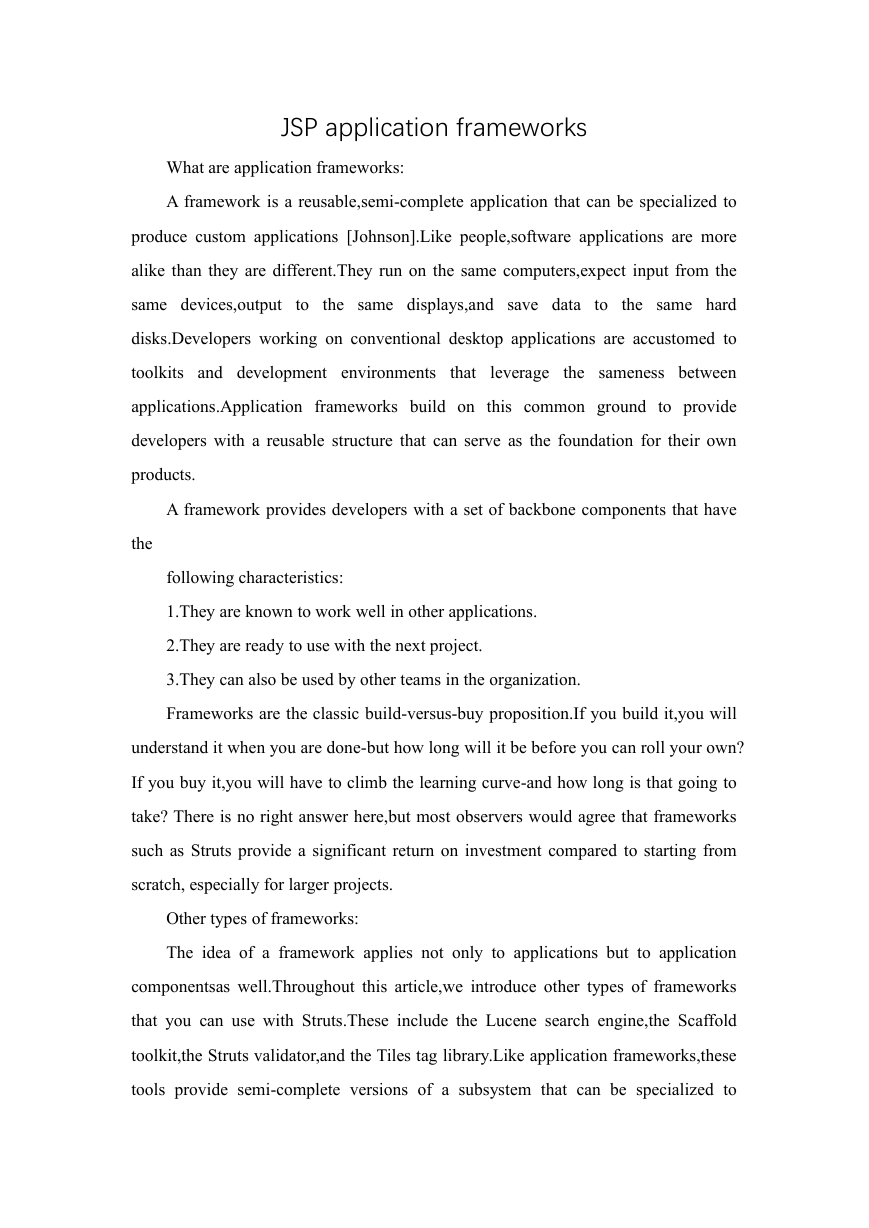
第1页 / 共16页
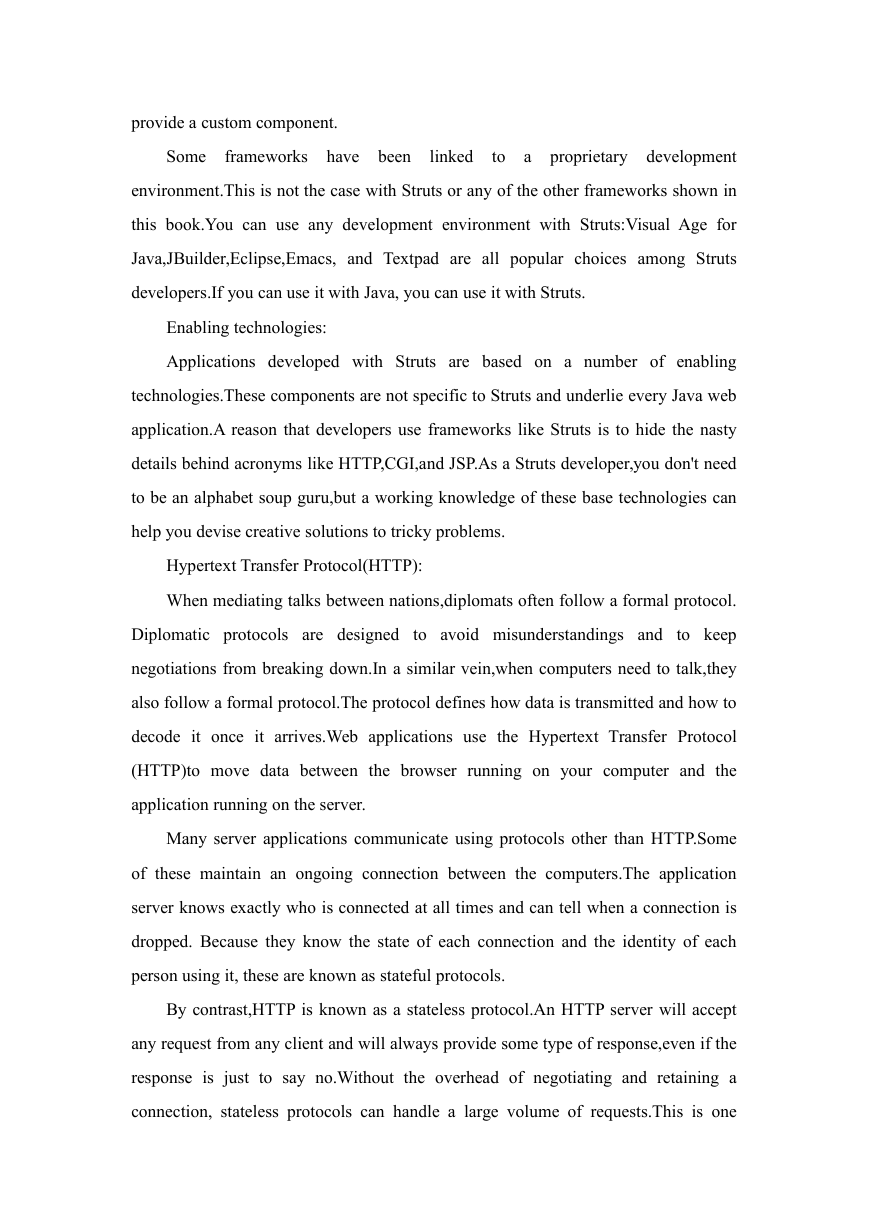
第2页 / 共16页
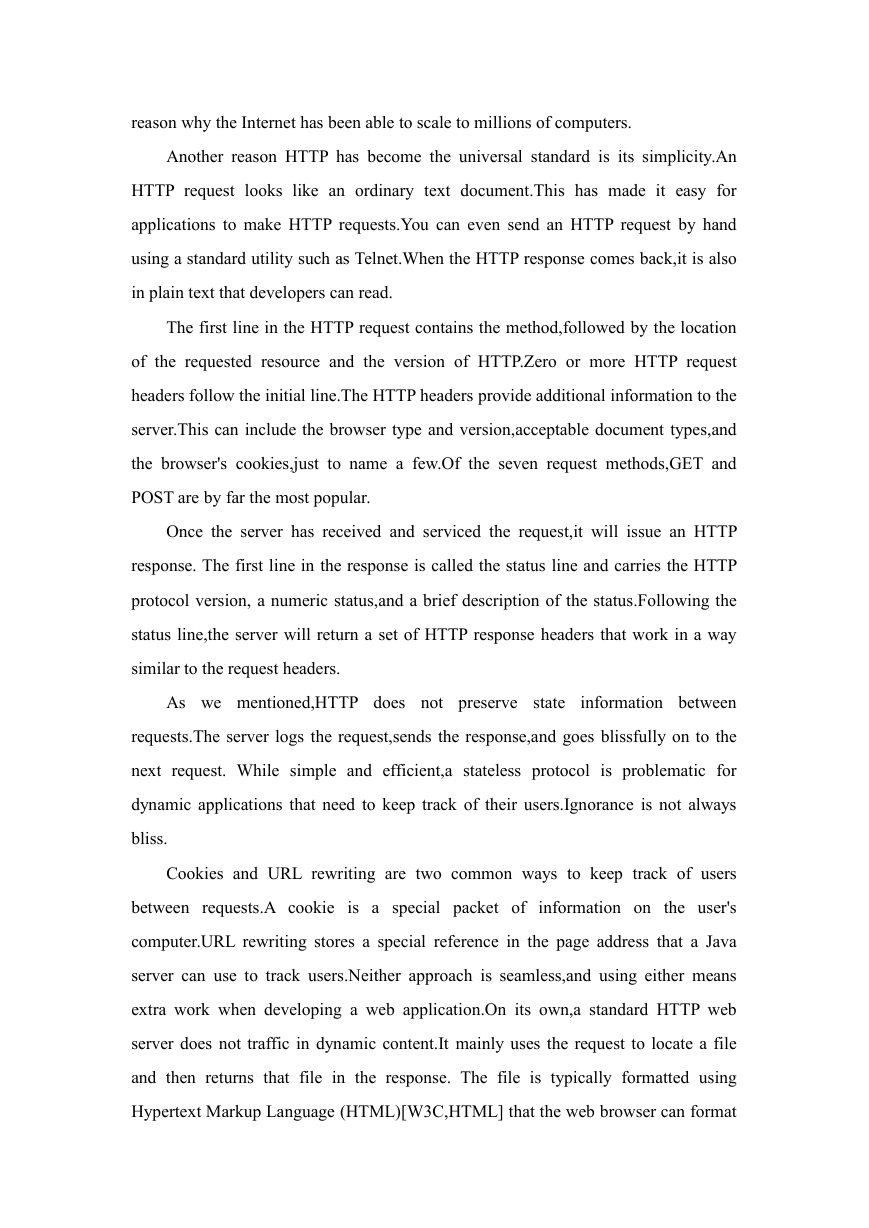
第3页 / 共16页
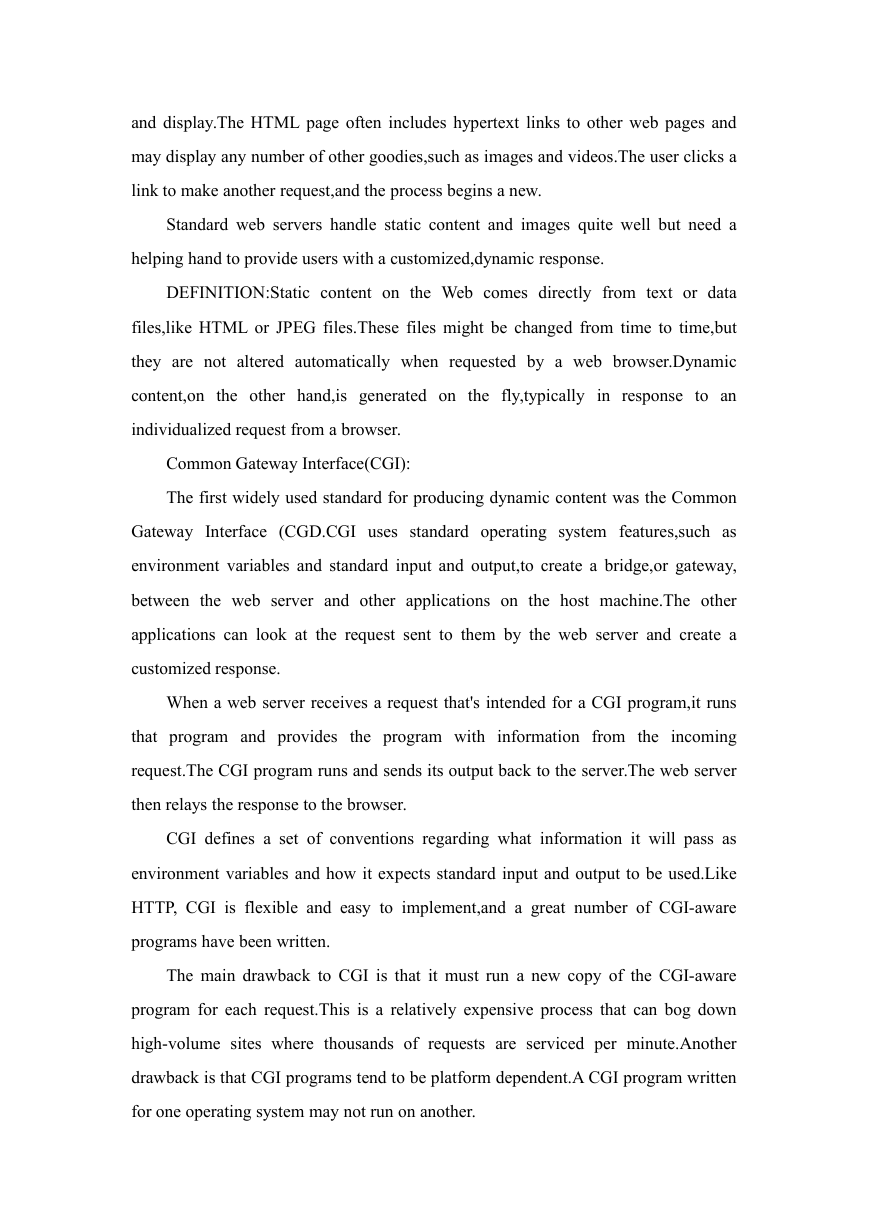
第4页 / 共16页
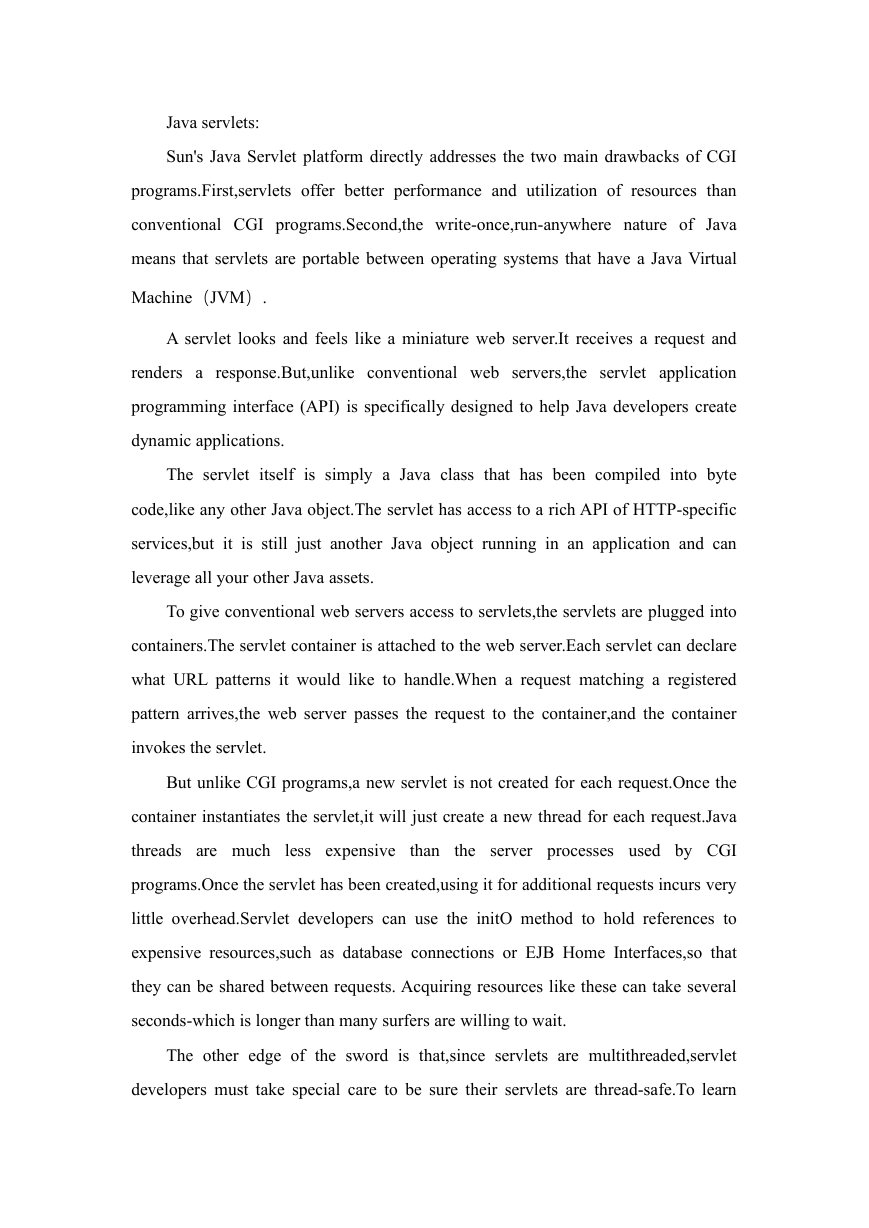
第5页 / 共16页
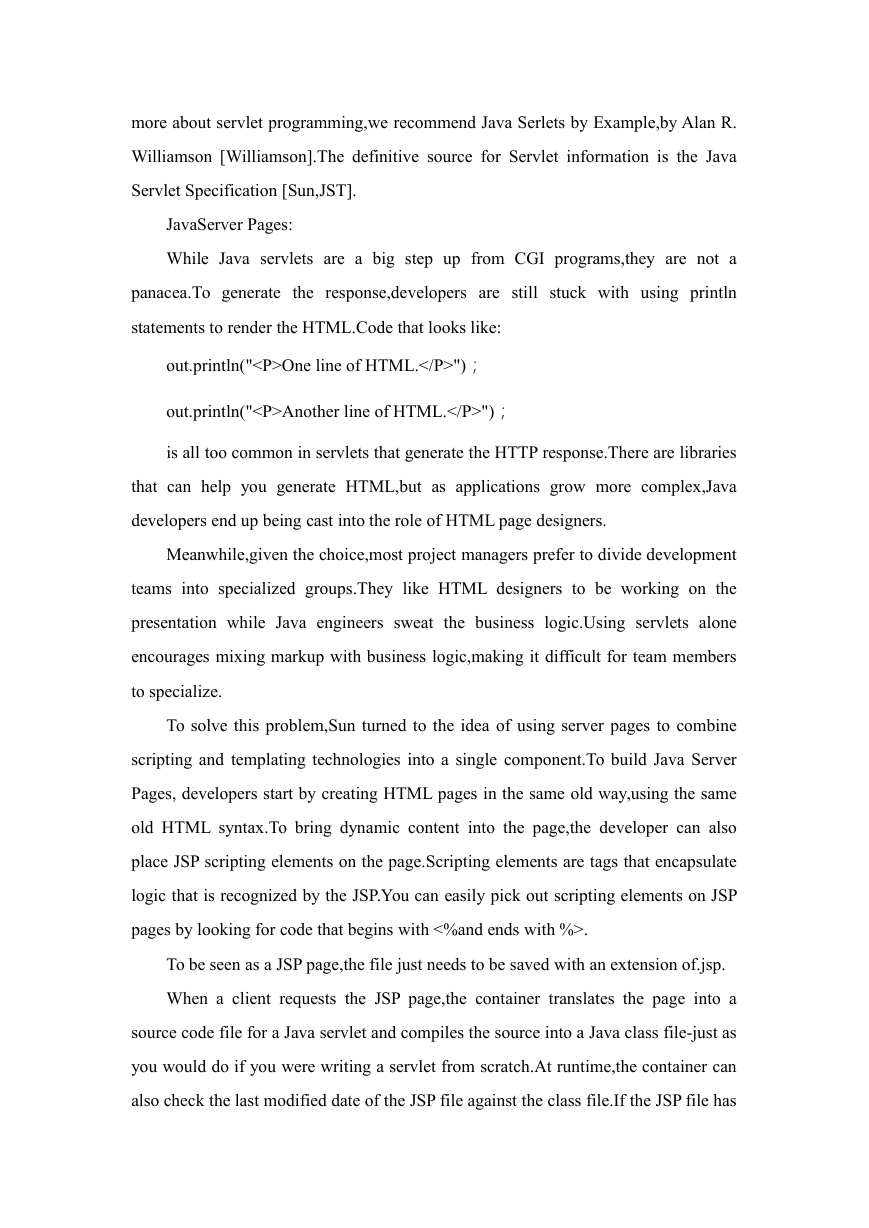
第6页 / 共16页

第7页 / 共16页
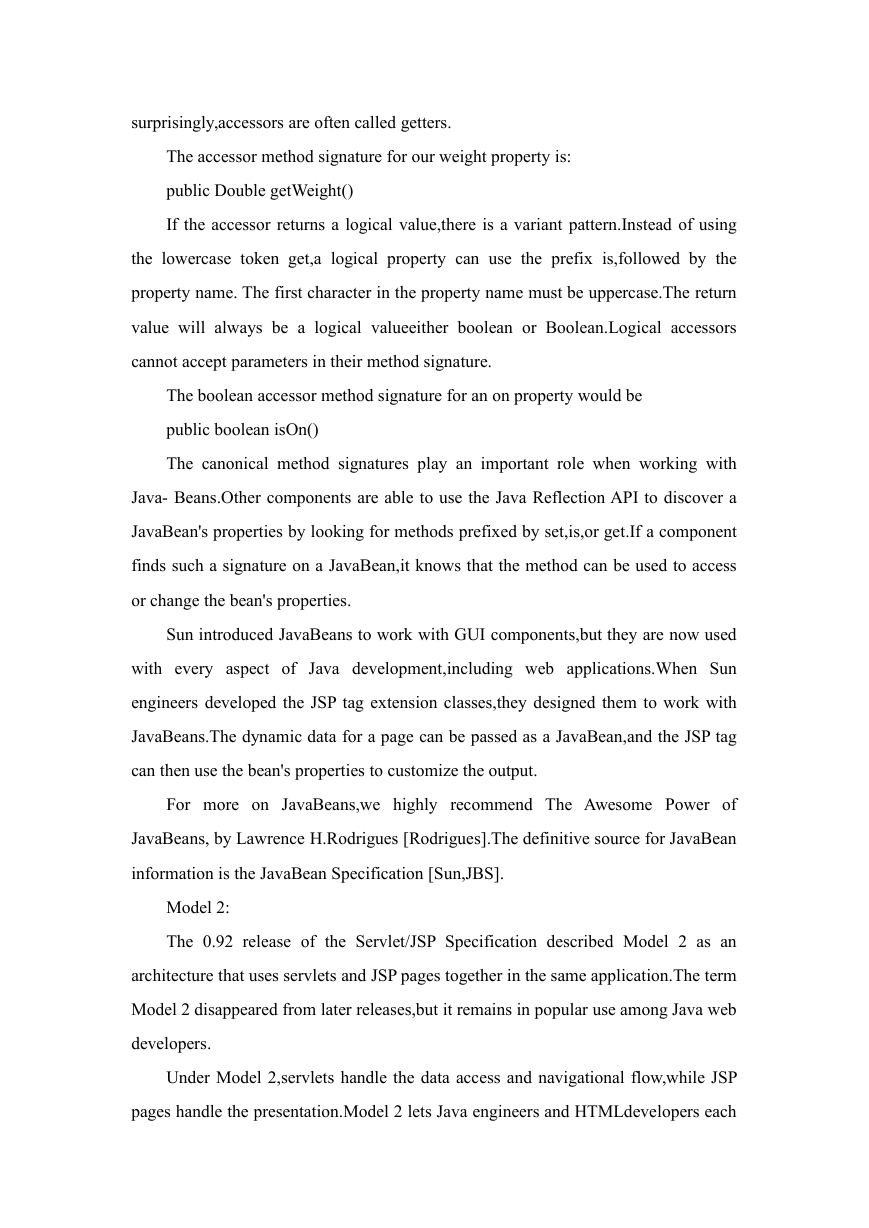
第8页 / 共16页








One line of HTML.
"); out.println("Another line of HTML.
"); is all too common in servlets that generate the HTTP response.There are libraries that can help you generate HTML,but as applications grow more complex,Java developers end up being cast into the role of HTML page designers. Meanwhile,given the choice,most project managers prefer to divide development teams into specialized groups.They like HTML designers to be working on the presentation while Java engineers sweat the business logic.Using servlets alone encourages mixing markup with business logic,making it difficult for team members to specialize. To solve this problem,Sun turned to the idea of using server pages to combine scripting and templating technologies into a single component.To build Java Server Pages, developers start by creating HTML pages in the same old way,using the same old HTML syntax.To bring dynamic content into the page,the developer can also place JSP scripting elements on the page.Scripting elements are tags that encapsulate logic that is recognized by the JSP.You can easily pick out scripting elements on JSP pages by looking for code that begins with <%and ends with %>. To be seen as a JSP page,the file just needs to be saved with an extension of.jsp. When a client requests the JSP page,the container translates the page into a source code file for a Java servlet and compiles the source into a Java class file-just as you would do if you were writing a servlet from scratch.At runtime,the container can also check the last modified date of the JSP file against the class file.If the JSP file has 2023年江西萍乡中考道德与法治真题及答案.doc
2023年江西萍乡中考道德与法治真题及答案.doc 2012年重庆南川中考生物真题及答案.doc
2012年重庆南川中考生物真题及答案.doc 2013年江西师范大学地理学综合及文艺理论基础考研真题.doc
2013年江西师范大学地理学综合及文艺理论基础考研真题.doc 2020年四川甘孜小升初语文真题及答案I卷.doc
2020年四川甘孜小升初语文真题及答案I卷.doc 2020年注册岩土工程师专业基础考试真题及答案.doc
2020年注册岩土工程师专业基础考试真题及答案.doc 2023-2024学年福建省厦门市九年级上学期数学月考试题及答案.doc
2023-2024学年福建省厦门市九年级上学期数学月考试题及答案.doc 2021-2022学年辽宁省沈阳市大东区九年级上学期语文期末试题及答案.doc
2021-2022学年辽宁省沈阳市大东区九年级上学期语文期末试题及答案.doc 2022-2023学年北京东城区初三第一学期物理期末试卷及答案.doc
2022-2023学年北京东城区初三第一学期物理期末试卷及答案.doc 2018上半年江西教师资格初中地理学科知识与教学能力真题及答案.doc
2018上半年江西教师资格初中地理学科知识与教学能力真题及答案.doc 2012年河北国家公务员申论考试真题及答案-省级.doc
2012年河北国家公务员申论考试真题及答案-省级.doc 2020-2021学年江苏省扬州市江都区邵樊片九年级上学期数学第一次质量检测试题及答案.doc
2020-2021学年江苏省扬州市江都区邵樊片九年级上学期数学第一次质量检测试题及答案.doc 2022下半年黑龙江教师资格证中学综合素质真题及答案.doc
2022下半年黑龙江教师资格证中学综合素质真题及答案.doc